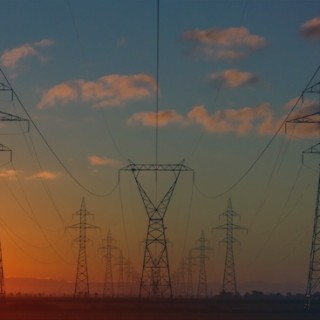Integrating Variable Renewables in Poland | Eight points on integrating variable renewable energy to the Polish power system
Report
The Polish energy mix is changing. While absolute figures still show a rather small share of variable renewables in the generation mix, these will play a growing role in the future. The study of Forum Energii presents eight main areas of action that facilitate the further integration of the renewables in the specific context of a changing Polish power system.

Wind and solar power have seen tremendous technological improvement and cost declines in recent years. This is reflected in the outcome of auctions worldwide, where, in many regions, these sources of electricity have reached prices making them cost-competitive with conventional generation. Costs for variable renewables are projected to decrease even further in the future, making them game changers in power sectors around the globe. These developments are likely to lead to the arrival of higher shares of variable renewables in Poland as well, where additional arguments in their favour may prompt their deployment.
- The share of variable renewable energy sources in Poland is set to increase over the coming years. The characteristics of these electricity sources require greater system flexibility both on the demand and on the supply side to respond to fluctuations in generation. Poland is at an important crossroads to introduce needed flexibility into its generation fleet and has started to take promising steps to flexibilize demand.
- Poland has taken first steps to introduce flexibility into its energy system. A demand-side response (DSR) programme was launched in 2017. There is a further need of consecutive development of this programme and other system services.
- Aging grid infrastructure and generation units will require modernization efforts in Poland. This is an opportunity to update and reinforce the grid and generation fleet in a way that facilitates the integration of variable renewables in a cost-efficient manner.
- Poland is not alone in tackling challenges related to changes in its energy system. Continuing efforts to improve regional cooperation – in terms of governance, market rules, grid integration and operation – can distribute the challenge of integrating variable renewables over larger areas, helping to smooth operation of the system and increase security of supply.
- In addition to low-hanging fruits and immediately available options to facilitate the integration of variable renewables, more advanced steps like coupling the electricity and transport sectors or benefitting from declining prices for battery storage, may become relevant at higher shares of variable renewable energies in the electricity sector.
The report "Integrating Variable Renewables in Poland. Eight points on integrating variable renewable energy to the Polish power system" aims at presenting options that are available to facilitate the integration of the growing shares of variable renewables in the specific context of changes in the Polish power system. Rather than formulating final recommendations, its aim is to provide the ground for a fact-based debate, structured around eight key points:
- The Polish electricity grid is in need of modernization and efforts are underway to achieve this. Within the process, it is possible to prepare the system for larger shares of variable renewables and facilitate their integration.
- The conventional power fleet in Poland will undergo inevitable modernisation and replacement. This is an opportunity to ensure conventional capacity is made more flexible to partner with variable renewables.
- Flexibility is also key when it comes to the demand side. Considerable potential exists and first promising steps are pointing in the direction of ensuring demand responds to market signals, easing the integration of variable renewables.
- For Poland as for other countries, engaging in European regional cooperation efforts and debates can yield benefits in terms of efficient and stable system operation – including the easier integration of larger shares of variable renewables.
- Given its large district heating network and growing interest in electric mobility, Poland is well placed to tap the potential of coupling sectors and thereby improving its capability to adapt to variable renewable energy generation.
- In addition to its good heat storage potential, Poland will be able to benefit from downward price trends in battery storage. These storage options will become more important at higher variable renewable energy shares, potentially providing system services and flexibility.
- The addition of variable renewables can be regionally steered, through various planning tools. This facilitates coordinated integration instead of uncontrolled development.
- Variable renewable energies are able to take on system responsibility that further facilitates their integration, e.g. by providing system services, if the relevant markets are designed appropriately.
Title of analysis: "Integrating Variable Renewables in Poland | Eight points on integrating variable renewable energy to the Polish power system"
Date of publication: December 2017
Authors: Izabela Kielichowska, dr Karoline Steinbacher, Thobias Sach, Michael Döring, Fabian Wigand, Ecofys
Cooperation: dr Fabian Joas, Agora Energiewende
Substantive supervision: dr Joanna Maćkowiak Pandera, Forum Energii.
Related content
-
22.9.2017
Polish energy sector 2050 | 4 scenarios

-
21.3.2017
Options for integration of the Polish energy market within the European Union

-
23.9.2015
Power deficit in the Polish power system in August 2015

-
27.3.2017
Flex-E | How to develop the DSR potential in Poland and reduce the costs of the energy system


